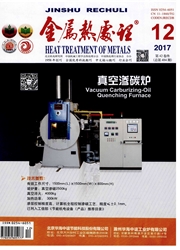

 中文摘要:
中文摘要:
为改善新型近B钛合金Ti3Zr2Sn3Mo25Nb(TLM)的抗凝血性能和血液相容性,通过溶胶一凝胶和表面官能化技术在TLM合金表面制备出一层活性TiO2薄膜,再利用自组装技术在TiO2薄膜表面构建一个肝素一白蛋白多层功能复合涂层。利用Raman光谱分析改性处理后TLM合金表面涂层的相组成,借助SEM、AFM研究了复合涂层的表面形貌和微观特征,通过溶血率测试、血小板粘附试验对TLM合金表面改性前后的粗液相容性进行评估。结果表明,经表面肝素一白蛋白复合涂层修饰处理后,TLM合金的溶血率显著降低,表面粘附的血小板数量明显减少且激活反应轻微,即TLM合金的抗凝血性能和血液相容性均得到了明显改善。
 英文摘要:
英文摘要:
In order to improve the anticoagulant properties and haemocompatibility of the TLM alloy, a layer of active TiO2 film was prepared using sol-gel and surface bio-functionaiized methods on the TLM alloy, and then the heparin and albumin alternate coating was prepared on the active TiO2 fihns through the self assembly technology. The phase identification and surface characteristics of the composite coating was successively undertaken using Raman, SEM and AFM, and the in vitro blood compatibility of the TLM alloy before and after surface anticoagulant modification was evaluated by the hemolysis test and platelet adhesion test. The results show that the hemolysis rate of the TLM alloy after surface anticoagulant treatment is obviously lower than that of the samples without surface modification, and the number of adhered platelets on the TLM alloy samples with surface anticoagulant treatment is much less than that on the untreated samples, and almost all platelets adherent to the anticoagulant surface in a less activated pattern, the haemocompatibility and anticoagulation of the TLM alloy could be significantly improved by surface modification via heparin and albumin-immobilization.
 同期刊论文项目
同期刊论文项目
 同项目期刊论文
同项目期刊论文
 期刊信息
期刊信息
